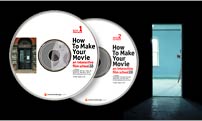
BACK

The Chronicle of Higher Education
AUGUST 18, 1998 - REVIEWER: JEFFREY R. YOUNG

Film Professor at Ohio University Creates a Virtual Film School on CD-ROM

A film professor at Ohio University has put his introductory film-making course on CD-ROM, with everything from lessons on sound and lighting to a fast-forward through film history. The result — one of the latest attempts to bottle course content in an electronic form that can be sold in stores — was released last month.
The course, "How to Make Your Movie: An Interactive Film School," is packaged like a video game — in a glossy box emblazoned with screen shots and testimonials from enthusiastic reviewers. It is distributed by Electronic Vision, a software company that helped develop the CD-ROM and that will share any profits with the professor, Rajko Grlic, and Ohio University. The retail price of "How to Make Your Movie" is $89.95; the college is offering a related on-line course this fall, for $6,000.
Mr. Grlic (pronounced "GUR-litch") wrote, directed, and produced the three-CD-ROM set. He says he originally had planned to write a textbook based on his "Master Class in Film Directing," but decided to try multimedia instead because of its creative possibilities.
It was no easy task. The project involved 80 people and took about three years to complete.
Like many educational CD-ROMs, this one is set in a virtual classroom building with each room focusing on a different topic. Students can move from room to room by clicking on doors and hallways using a computer mouse.
The building, however, looks more like a haunted house than a college. In the deserted virtual classrooms, dilapidated walls are covered with cobwebs, paint splotches, and graffiti, and chairs and podiums stand empty. But, as the voice of a narrator explains, all the materials from last year's film courses are lying around — lecture notes from professors, completed assignments by students, and pieces of a student-made film. There's also plenty of virtual equipment to play with.
"I chose the deserted film school to develop in each of the students the spirit of discovery, of curiosity, and at the same time to offer them a chance to find their own way," says Mr. Grlic. In fact, the environment is based on an abandoned mental institution in Athens, Ohio. "It fits perfectly," quips Mr. Grlic. "I started to think there must be some secret connection between mental institutions and film schools."
The virtual film school is also a kind of critique on the practices of some real film schools, says Mr. Grlic. "Many film schools are very inflexible and kill the student's imagination so that they become ‘technical artists,'" he says. The CD-ROM, he adds, "is a shelter which protects its students and allows them to experience film and decide what they really want to do."
The CD-ROM can also provide rich examples that would be impossible in a printed textbook. A section on "film grammar" shows examples of what a tilting shot looks like, as well as a low-angle shot, a zoom shot, and many others. A lighting studio lets students turn on lights in various positions to see how different combinations appear through the camera. A sound-mixing board in the production room lets users hear how the addition or subtraction of ambient sound and sound effects changes the feel of a film.
On the second floor of the virtual film school, users walk through the entire process of making a short student production — writing the script, auditioning actors, shooting the film, editing it, even adding credits. Although the abandoned-school conceit continues, this portion of the CD is essentially an interactive documentary about an actual course Mr. Grlic gave at Ohio University two years ago. Users can peek at the notes his students wrote about the process, see what mistakes they made, and enjoy photographs of zany moments in class.
The virtual film school has some shortcomings, however. Most of the lectures are short — only a few pages long (the film-history lecture, for instance, is called "The Speedy Gonzales Version of Film History"). And some appearances by "visiting lecturers" seem more like advertisements for their film schools than informative presentations.
But the software does have what a film director might call "good production values": The designers paid plenty of attention to details in the virtual environment. Some of the graffiti illustrates film-making techniques, and posters for famous films abound. The paper-towel dispenser in the bathroom rolls out film trivia.
The CD-ROM is also a reference tool for aspiring film makers, with listings of film festivals, descriptions of popular camera and lighting equipment, and a bibliography of recommended books.
The flashy CD-ROM seems like just the kind of educational product that some fear could replace faculty members as colleges look to technology to cut costs. Mr. Grlic says that is not his intent. "We didn't produce this to put the professors around the world out of business. I don't believe anything can replace the human contact in the process of film making." Even so, the product's box brags that it contains "a tuition-free course in filmmaking."
Mr. Grlic says the intended audiences are high-school students interested in a preview of film school, college students in introductory film courses, and professors looking for a tool to set up a course. The package includes a syllabus, a production notebook for students, and raw footage — in electronic form — of the student film featured in the virtual film school. Users must supply their own digital editing software to turn the footage into their own versions of the film.
David K. Irving, an associate professor of film and television at New York University, says the CD-ROM fills a void. He says he had looked into making a similar product himself, but had been unable to work out the details. "It costs so much to produce something like this," he notes.
Some professors are considering using the virtual film school in their courses. "It's much better than the abstraction of a textbook," says Larry Elin, an assistant professor of television, radio, and film at Syracuse University. "It's not quite the same as having a real experience with cameras and lights, but it's pretty darn close."
This fall, Ohio University will offer an on-line film-making course based around the CD-ROM and taught by Mr. Grlic. The $6,000 tuition includes the price of a video camera for each student to use on his or her own production.
Michael Greenfest, associate director of continuing education, says 20 people from half a dozen countries have expressed interest in the course. Many of the discussions will take place over the Internet, Mr. Greenfest says, but the students will also meet in person periodically to get hands-on training and work together as a group.
As Mr. Grlic puts it, "It combines the best of both worlds: virtual and real." .
|
|

Awards

|

